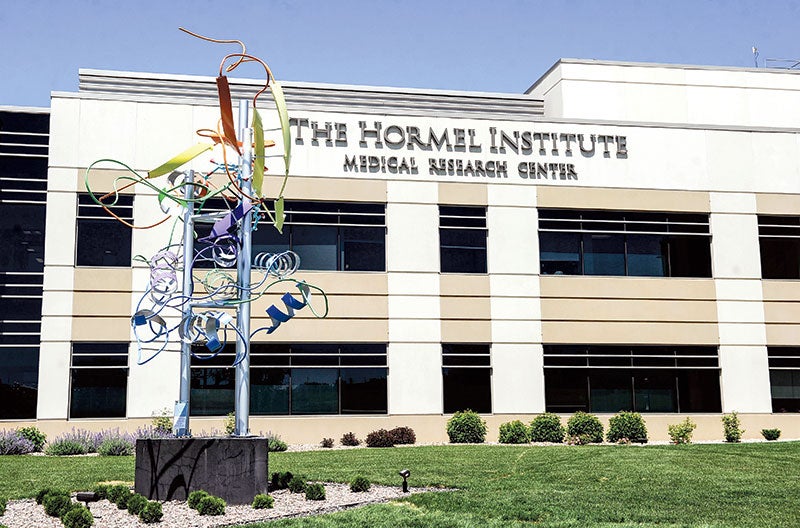For those with underlying health conditions, getting a COVID vaccine remains elusive
Published 6:50 am Wednesday, February 10, 2021

- Herald file photo
|
Getting your Trinity Audio player ready...
|
By Catharine Richert
Seven years ago, Sandy Swanson’s husband, Kyle, had a brain stem bleed that rendered him paralyzed from the nose down.
“He has a feeding tube, he has a [tracheostomy]. And what we found out later was that he has locked-in syndrome,” she said.
The rare neurological disorder means Kyle Swanson is conscious and can understand what’s going on around him, but can only communicate through a device he controls with his eyes.
Sandy Swanson said Kyle’s ability to understand the pandemic and the risks that come with it has been emotionally difficult for their family — and even harder as vaccines have become available to multiple people in Kyle Swanson’s life, but not to him.
Any time he feels sick, Sandy Swanson said, “He spells out to me ‘I’m scared, stay by me.’ It’s awful that he has to live like that every day.”
Even though Kyle Swanson has a host of underlying health conditions, he’s only 55. And he lives at home in Pipestone, not in a nursing home. He’s not eligible to get the vaccine yet under state guidance, which prioritizes people like health care workers, those over 65 and those who live and work in congregate care.
More recently, the state has also started giving vaccines to a limited number of teachers and child care providers as it pushes schools to reopen for in-person learning.
As Minnesota expands access to the COVID-19 vaccine, Sandy and Kyle Swanson are wondering when younger people with serious underlying health conditions will be able to get shots.
The Swansons are in a perplexing and frustrating situation, as are scores of others who are at high risk of getting severe cases of COVID-19 but who can’t yet get a vaccine: people with suppressed immune systems, for instance, or people who have serious health conditions that require in-home nursing care.
Members of Kyle Swanson’s in-home care team, which includes his identical twin, Kevin, have gotten their vaccines, because they are licensed through an in-home care provider.
If he wasn’t able to get services at home, Sandy Swanson said, Kyle would be living in a nursing home, and would have been inoculated by now.
“It’s like he doesn’t matter,” she said. “It’s like he’s being discarded because he’s living at home.”
Farther north and east in Montevideo, Minn., Shelly Elkington hears similar frustrations from the slate of clients who hire in-home care through her agency.
“Our clients need to still go out. They don’t have everything provided for them in a facility. They still need to go to the pharmacy to get their meds, they still need to go to the grocery store to get food,” Elkington said. “So I felt like they were higher risk being exposed because of the different places they have to go.”
According to the Kaiser Family Foundation, some states are simultaneously prioritizing people who are 65 and older alongside younger people who are at high risk, a move allowed under recent guidance issued by the outgoing Trump administration.
While vaccines remain scarce, Minnesota is focusing on vaccinating people 65 and older right now — a group that makes up about a fifth of the state’s population and who have been the most likely to die from the virus.
“The priorities so far have been cast in age groups, because age is a proxy for risk — but it’s not a perfect proxy,” said Debra DeBruin, a bioethicist at the University of Minnesota who serves on the committee that’s advising the state on its vaccine priorities. “Older people tend to have worse outcomes. But some younger people with underlying health conditions can be at comparable risk.”
DeBruin said part of the challenge is that the science isn’t entirely clear yet on which underlying health factors put people at high risk.
“If there are certain underlying health conditions that increase risk regardless of age, then we can prioritize based on those,” she said.
All of this is made even more challenging by the fact that vaccine doses continue to remain scarce, said Kris Ehresmann, the state’s infectious disease director.
“We know these are vulnerable populations, and they need to get vaccines as soon as we have more vaccines available,” she said. “But that’s the problem: We don’t have enough vaccines available.”
State officials have said they hope to soon see a significant increase in the amount of doses allocated to Minnesota from the federal government each week, as the Biden administration has promised.
In the meantime, back in Pipestone, Sandy Swanson says she’s been making a lot of phone calls to local health care providers, hoping to make sure that her husband is first in line to get his shot when the time comes — whenever that might be.




